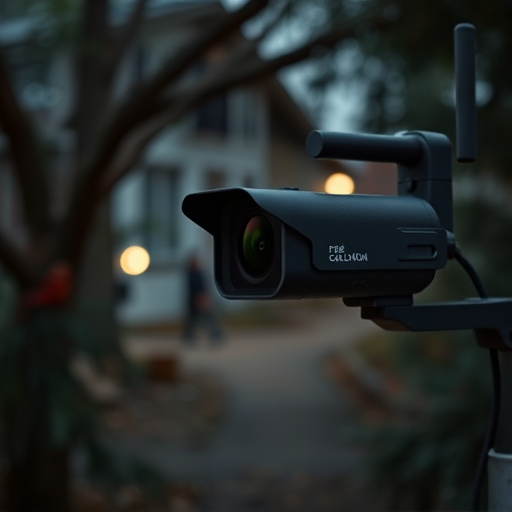Battery Operated Hidden Childcare Cameras enhance safety in sensitive environments by offering discrete surveillance solutions. Their compact design and long-lasting batteries enable strategic placement for continuous monitoring without disrupting natural settings. These cameras empower caregivers with remote access, fostering transparency but demanding strict adherence to legal privacy boundaries, especially regarding children. Ethical considerations balance security and individual privacy, emphasizing responsible use within legal frameworks.
In today’s digital age, ensuring the safety and well-being of children in childcare settings is paramount. This comprehensive guide delves into the world of covert recording spot identification, focusing on battery-operated hidden childcare cameras as a discreet surveillance solution. We explore strategic placement techniques tailored for childcare environments, expert tips on detecting covert recording devices, legal considerations, and the delicate balance between enhancing safety and respecting privacy.
- Battery Operated Cameras: Unobtrusive Surveillance Solution
- Hidden Placement Strategies for Childcare Settings
- Detecting Covert Recording Devices: Expert Tips
- Legal Considerations for Childcare Camera Use
- Enhancing Safety: Benefits and Ethical Boundaries
Battery Operated Cameras: Unobtrusive Surveillance Solution
Battery-operated cameras have emerged as a discreet and effective solution for surveillance, especially in childcare settings where unobtrusive monitoring is essential. These compact devices offer a unique advantage over traditional wired systems by eliminating the need for complex installations and unsightly cables, making them ideal for hidden placement. With long-lasting battery life, these cameras can operate quietly and continuously, providing peace of mind to caregivers and parents.
For childcare facilities, battery-operated hidden cameras are invaluable tools for ensuring the safety and well-being of children. They allow caregivers to remotely monitor activities, check on children’s progress, and quickly respond to any concerning situations without alerting potential intruders or disturbing the natural flow of the environment. This technology promotes a safer, more secure atmosphere, giving parents the confidence that their children are in capable hands.
Hidden Placement Strategies for Childcare Settings
In childcare settings, maintaining a safe and nurturing environment is paramount. One effective method to achieve this is through strategic placement of hidden cameras, specifically Battery Operated Hidden Childcare Cameras. These discreet devices can be subtly integrated into various locations within the facility, offering comprehensive coverage without compromising the natural flow of the space. For instance, they can be installed behind decorative mirrors in play areas or tucked away in corners of classrooms, providing a bird’s-eye view of activities while remaining invisible to children and staff.
To maximize their effectiveness, consider placing these cameras in areas prone to potential safety concerns, such as near nap time or mealtime. The ability to remotely monitor interactions ensures that every moment is captured, allowing caregivers to quickly address any issues and provide evidence for accountability. This advanced surveillance technology empowers childcare providers with valuable insights, fostering a culture of transparency and responsibility.
Detecting Covert Recording Devices: Expert Tips
Detecting covert recording devices, such as battery-operated hidden childcare cameras, requires a meticulous and methodical approach. Experts recommend starting with a visual inspection, looking for any unusual objects or devices that might be disguised as everyday items. This initial scan should cover all possible hiding spots, from wall cracks to furniture crevices.
Advanced techniques include using thermal imaging cameras, which can detect heat signatures, and audio detectors designed to pick up on subtle electronic hums or signals. In cases where visual and auditory methods fail, employing specialized software for signal detection becomes an option. This technology can analyze digital interference and identify patterns indicative of hidden recording devices, ensuring a thorough sweep.
Legal Considerations for Childcare Camera Use
When utilizing battery operated hidden childcare cameras, it’s paramount to understand and adhere to legal considerations surrounding surveillance in childcare settings. The use of such devices must comply with local, state, or national laws governing privacy and data protection. Many jurisdictions have strict regulations on hidden camera usage, especially in areas where children are present, to protect their right to privacy.
In many countries, explicit consent from parents or guardians is required before installing any form of surveillance equipment within childcare facilities. This includes battery operated hidden cameras. It’s crucial for childcare centers and providers to be transparent about monitoring practices and ensure all legal boundaries are respected. Failure to comply can result in severe consequences, including fines, lawsuits, and damage to the reputation of the facility.
Enhancing Safety: Benefits and Ethical Boundaries
Covert recording, particularly with battery-operated hidden childcare cameras, offers enhanced safety measures in various settings, including homes and care facilities. These devices allow caregivers and parents to monitor activities, ensuring the well-being and security of children. The benefits are numerous: real-time monitoring, immediate response to potential issues, and peace of mind. However, ethical boundaries must be respected. Privacy is a paramount concern; recording without consent, especially in areas where individuals expect privacy like bedrooms or bathrooms, raises significant ethical red flags. Legal frameworks and parental guidelines should be rigorously followed to ensure these safety tools are used responsibly, maintaining a balance between security and individual freedoms.
In conclusion, implementing battery-operated hidden childcare cameras can significantly enhance safety protocols in various settings. However, it’s crucial to balance this with ethical considerations and legal boundaries, as outlined in this guide. By understanding the best placement strategies, detecting covert recording devices, and navigating relevant laws, childcare facilities can create a secure environment while respecting privacy. Ultimately, leveraging technology responsibly ensures children’s well-being without compromising ethical standards.
